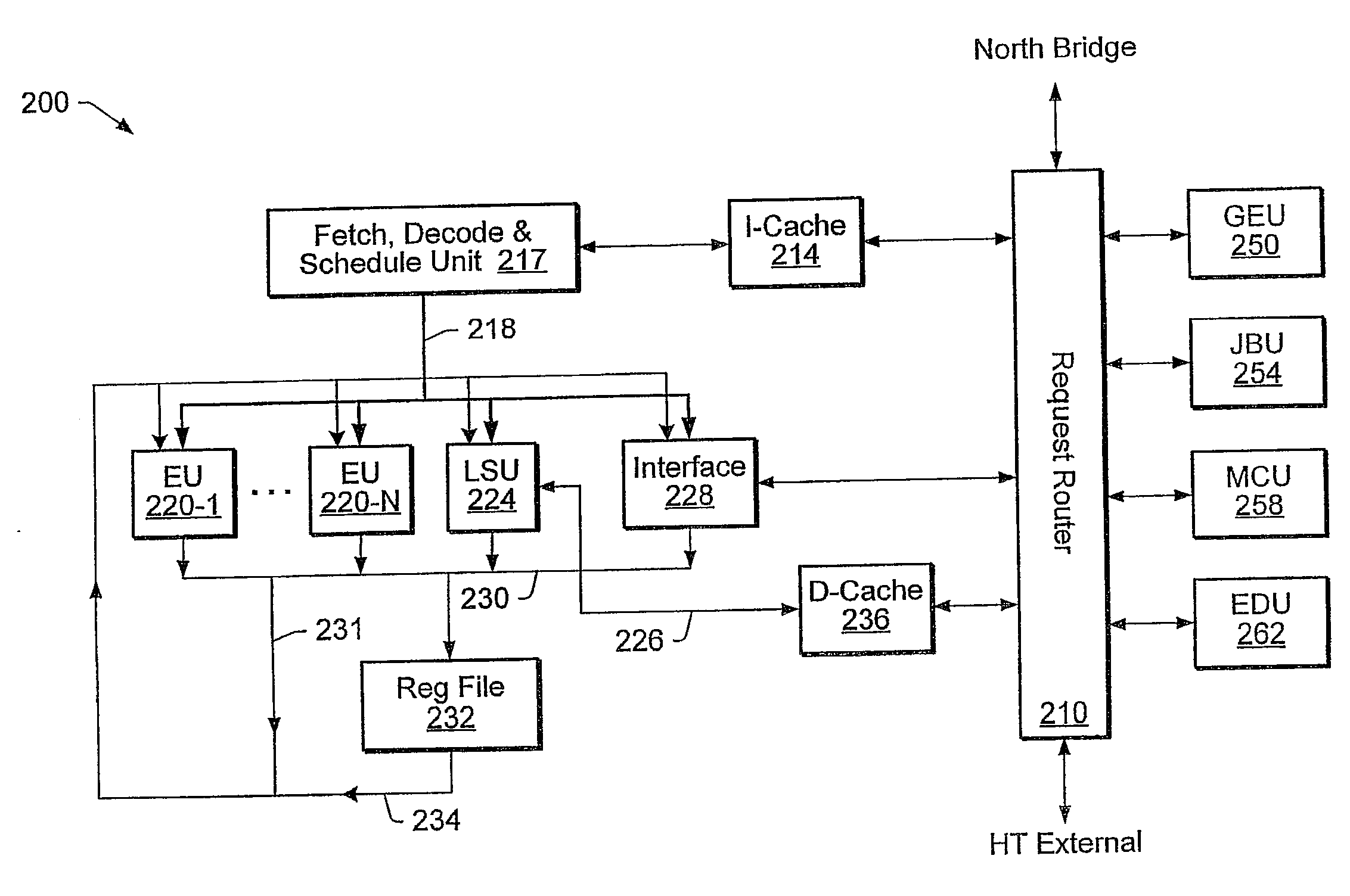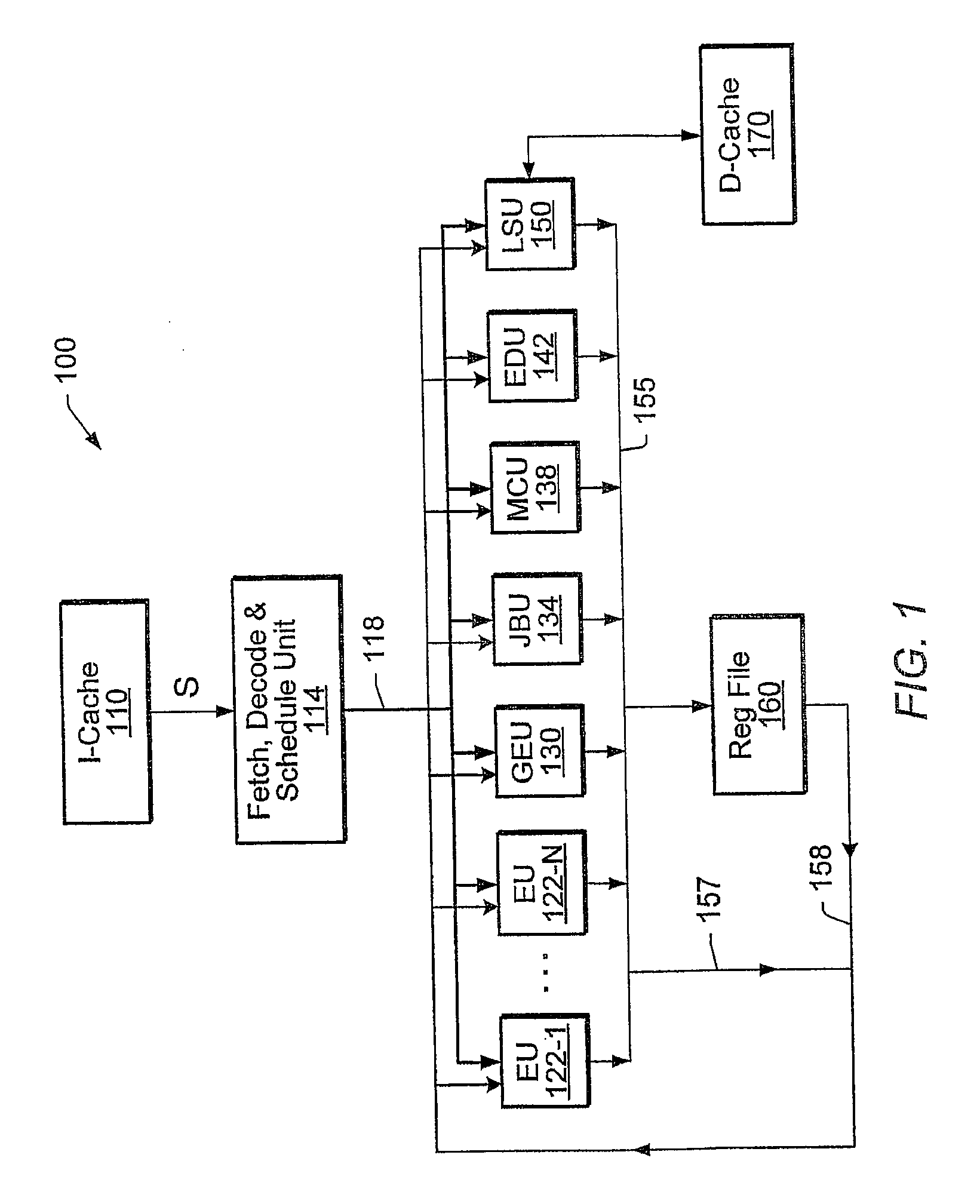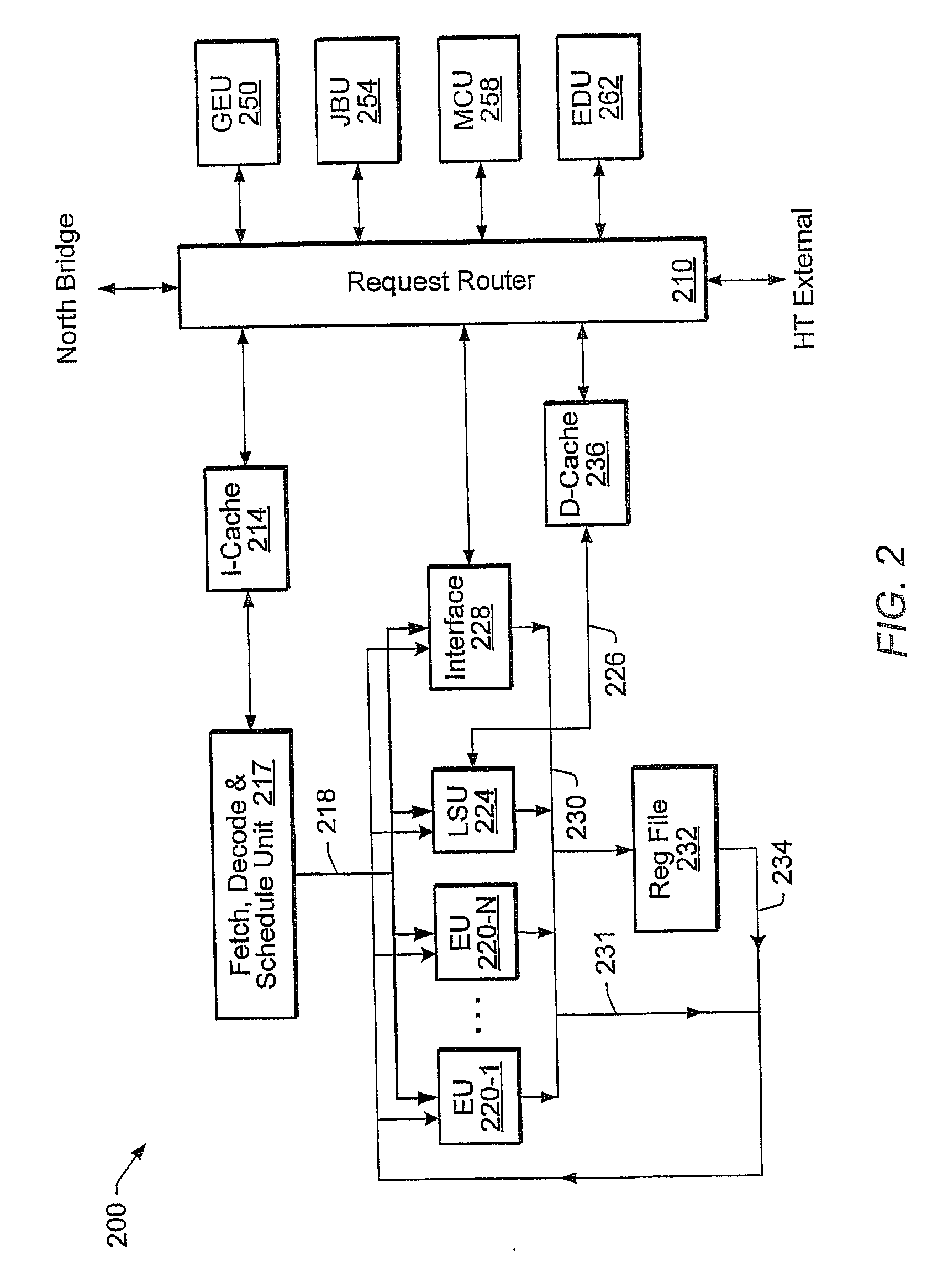Unified Processor Architecture For Processing General and Graphics Workload
a processor architecture and graphics workload technology, applied in computing, digital computers, instruments, etc., can solve the problems of x86 processors that are not well adapted to the types of calculations performed in 3d graphics, software applications that involve 3d graphics typically run very slowly on x86 processors, and each processing unit consumes a significant amount of power and board real esta
- Summary
- Abstract
- Description
- Claims
- Application Information
AI Technical Summary
Benefits of technology
Problems solved by technology
Method used
Image
Examples
Embodiment Construction
[0024]FIG. 1 illustrates one embodiment of a processor 100. Processor 100 includes an instruction cache 110, a fetch-decode-and-schedule (FDS) unit 114, execution units 122-1 through 122-N (where N is a positive integer), a load / store unit 150, a register file 160, and a data cache 170. Furthermore, the processor 100 includes one or more additional execution units, e.g., one or more of the following: a graphics execution unit (GEU) 130 for performing graphics operations; a Java bytecode unit (JBU) 134 for executing Java byte code; a managed code unit (MCU) 138 for executing managed code; an encryption / decryption unit (EDU) 142 for performing encryption and decryption operations; a video execution unit for performing video processing operations; and a matrix math unit for performing integer and / or floating-point matrix and vector operations. In some embodiments, the JBU 134 and the MCU 138 may not be included. Instead, the Java byte code and / or managed code may be handled within the ...
PUM
 Login to View More
Login to View More Abstract
Description
Claims
Application Information
 Login to View More
Login to View More - R&D
- Intellectual Property
- Life Sciences
- Materials
- Tech Scout
- Unparalleled Data Quality
- Higher Quality Content
- 60% Fewer Hallucinations
Browse by: Latest US Patents, China's latest patents, Technical Efficacy Thesaurus, Application Domain, Technology Topic, Popular Technical Reports.
© 2025 PatSnap. All rights reserved.Legal|Privacy policy|Modern Slavery Act Transparency Statement|Sitemap|About US| Contact US: help@patsnap.com



